Tuesday, December 22, 2015
1920-21 Hamilton Tigers Joe Malone Jersey
After their peak in 1912 and 1913 when they were the holders of the Stanley Cup, the Quebec Bulldogs of the National Hockey Association ran into hard times. While posting winning records in 1914 and 1915, they failed to qualify for the playoffs both seasons. A losing record of 10-12 in 1916 foreshadowed the downfall that await the club. A dismal first half in 1916-17 saw the Bulldogs at 2-8, only to reverse their fortunes in the second half of the season at 8-2, yet fail to make the postseason once more.
The Quebec Bulldogs in brighter days with the Stanley Cup
After the conclusion of the 1916-17 schedule, the NHA disbanded, only to be reborn as the new National Hockey League, with the Bulldogs as one of the charter members, only with the stress of being the smallest city in the league and the troubled economic times of the World War I, Quebec chose to suspend operations for the inaugural NHL season of 1917-18.
Their situation did not improve in time for the 1918-19 season when the 1918 Spanish flu pandemic erupted, causing the Bulldogs to once again take a pass on the season.
New ownership allowed the club to return to on ice competition for the 1919-20 season. High scoring star Joe Malone was recalled from the Montreal Canadiens and proceeded to lead not only the team, but the league in scoring with 39 goals and 49 points in 24 games. That, however, would prove to be the only highlight of the season for the team, as their defense would prove to be nothing short of hideous, giving up a total of 177 goals in 24 games, an average of 7.4 goals per game. That total was so putrid, it was greater than the Ottawa Senators and Toronto St. Patrick's combined total of 170.
The Bulldogs finished 2-10 in the first half, and there would be no rebound in the second half as another 2-10 record awaited them. Prior to the start of the 1920-21 season, the NHL would take back the franchise and sold it to interests in Hamilton, Ontario.
The club would be christened the Hamilton Tigers and six Quebec players, including Malone, would carry over to the first Tigers roster that would play their first ever game on this date in 1920, a 5-0 shutout of the Montreal Canadiens.
The 1920-21 Hamilton Tigers
The Tigers were led in scoring that night by future Hockey Hall of Famer Babe Dye, who scored the first goal in Tigers history at 12:30 of the first period to give Hamilton a 1-0 lead. Exactly five minutes later he would score his second of the period, both assisted by Joe Matte.
George Carey extended the Tigers lead to three at the four minute mark of the second, assisted by Moylan McDonnell, the only assist of the defenseman's 20 games that season. Matte made it three points on the night with his goal at the 16 minute mark of the period before Goldie Prodgers closed out the scoring at three minutes of the third period.
Howard Lockhart got the unlikely shutout in goal for Hamilton, considering that his only appearance for Quebec the previous season saw him let in no less than 11 goals! Lockhart would eventually play 59 NHL games over six seasons and record exactly one career shutout.
Howard Lockhart
The Tigers opening night shutout remains the one and only time a club has blanked an opponent during it's NHL debut and was arguably the high point in the history of the franchise. Of note, it would be the one and only game opening night star Dye would ever play in a Tigers sweater, as he was recalled from his loan by the Toronto St. Patricks due to an injury suffered by another member of the St. Patricks.
The Tigers would miss Dye dearly, as he would go on to lead the NHL in goal scoring that season with 35 total goals after netting 33 in 23 games following his recall by Toronto. In the absence of Dye, Malone would lead Hamilton with 28 goals and 37 points in 20 games after missing the first four games of the season due to a contract dispute.
Hamilton would go 2-2 before the return of Malone, but his arrival would do little to change the fortunes of the club, as they completed the first half of the season in last place at 3-7 and closed out the second half of the split season in last place with a record of 3-11.
Additional last place finishes followed the next three seasons thanks to records of 7-17, 6-18 and 9-15. Malone would lead the club in scoring again during 1921-22 and Mickey Roach took top honors in 1922-23 before Billy Burch did the same in 1923-24.
Then the unexpected happened, the lowly Tigers rose to the top of the standings with a 19-10-1 record as Burch again led the team with 20 goals and 24 points. Their scoreless tie with Ottawa during mid-December provided the difference over the second place St. Patricks who finished right behind Hamilton at 19-11-0.
The 1924-25 Hamilton Tigers
The excitement of their first place finish was quickly dashed in the most complete and utter way, as the entire roster of the Tigers went to their general manager on the train ride home following their final regular season game on March 9, 1925 and demanded the princely sum of $200 each for the six additional games the regular season had been extended that season due to the additions of two new clubs, the Boston Bruins and Montreal Maroons. Management responded with the argument that the player's contacts were based on playing from December 1st to March 30th, without regard to the number of games played.
The players held firm in their demands, refusing to participate in the postseason. The situation remained unresolved while the St. Patricks and Canadiens met in the semifinals. Once the Canadiens prevailed on March 13, league president Frank Calder met with Tigers management, who refused to change their position, and subsequently declared the Canadiens league champions, suspended the entire Tigers roster indefinitely and fined them $200 each, ending not only their season, but as it turns out the franchise itself!
Prior to the following NHL season, New York bootlegger Big Bill Dwyer purchased the Tigers roster for $75,000 to stock his expansion club, the New York Americans. It was a move the players did not mind, as they all received a pay increase, with some earning twice as much as before. The league officially revoked the Hamilton franchise on September 22, 1925, formally bringing to a close the story of not only the Hamilton Tigers, but NHL hockey in Hamilton, as the league has never returned.
Today's featured jersey is a 1920-21 Hamilton Tigers Joe Malone jersey. Their original jerseys feature vertical striping and the bold tiger head on a square patch. This style lasted but one season and was replaced by a new sweater which was adorned with a full-bodied walking tiger and horizontal striping.
The Hamilton Tigers jersey has taken on a legendary status since Sports Illustrated named the Hamilton Tigers jersey as one of "25 Lost Treasures of Sports", as no known surviving examples exist of any of the four different styles that were worn during their five seasons, despite reports that one was sold for $500 in the early 1990's in Hamilton to an unknown American collector and has never been seen since as reported in the documentary "Hunting the Last Hamilton Tiger" in 2009.
Labels:
Hamilton Tigers,
Malone Joe,
Quebec Bulldogs
Subscribe to:
Post Comments (Atom)

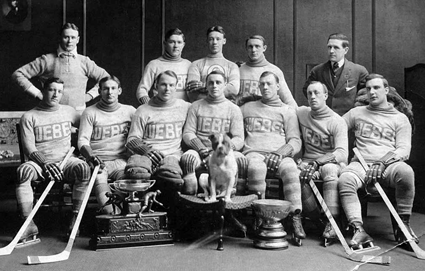
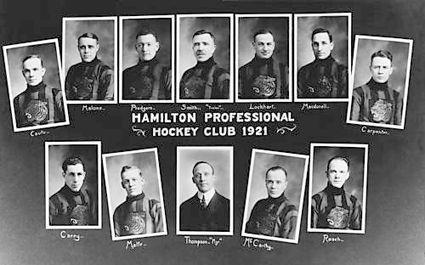
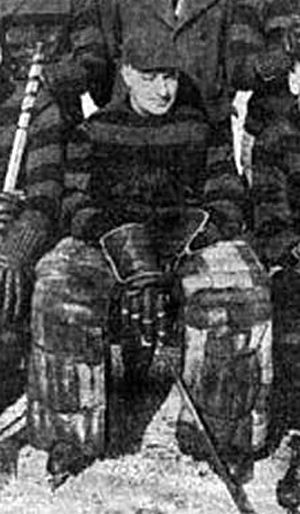
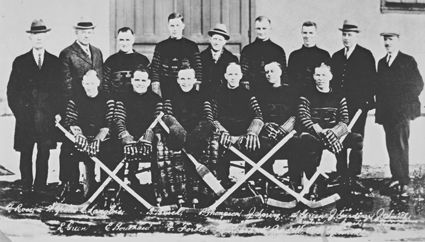
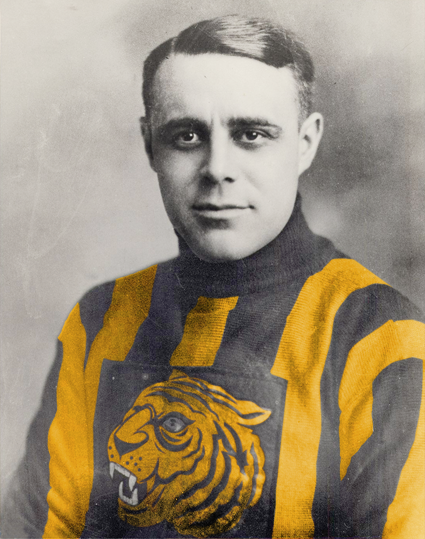










No comments:
Post a Comment
We welcome and encourage genuine comments and corrections from our readers. Please no spam. It will not be approved and never seen.